Do you love pizza but get bored with the same old toppings? Are you a homeowner looking to expand your culinary skills? Layering your toppings properly helps ensure an even distribution of deliciousness across each slice and can also be the difference between a soggy pie and a truly masterful meal. Let us show you how to do just that with our guide on how to layer a pizza with toppings.
Why Is it Important to Layer Pizza Toppings?
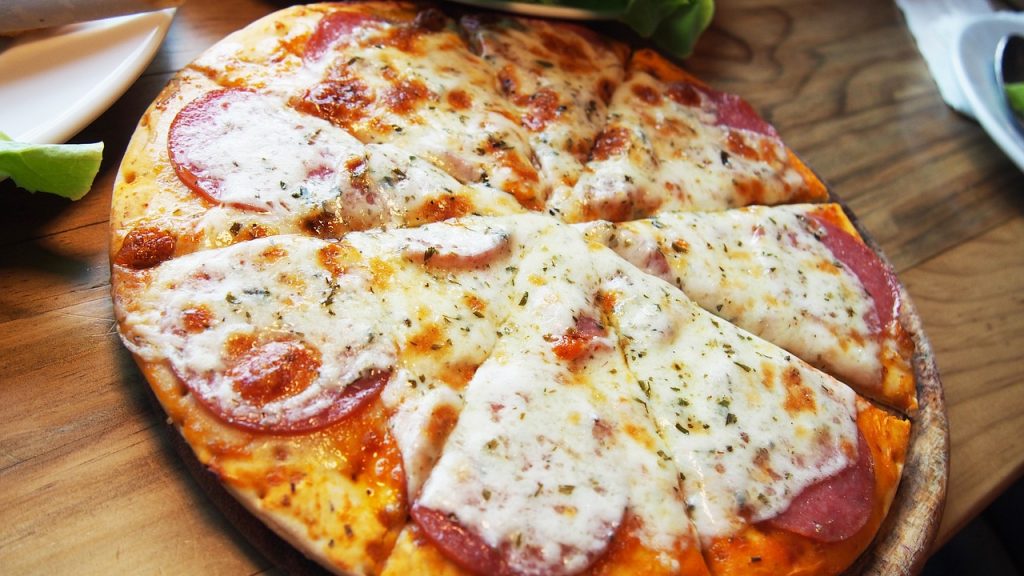
A pizza with its toppings scattered across the top is a thing of beauty. But many people don’t realize that there’s an art to layering your pizza so that your toppings are evenly distributed, and each bite is as flavorful as the last. Let’s explore why it is important to layer your pizza correctly and how you can achieve the perfect balance of flavors in every slice.
The Benefits Of Properly Layering Pizza Toppings
One of the main benefits of properly layering your pizza toppings is that it prevents them from burning or drying out in the oven. Layering the toppings creates an even barrier between them and the cheese and tomato sauce, which helps keep them moist throughout the cooking process. This also helps ensure that each bite has a balanced flavor profile since all the ingredients will cook evenly.
Another benefit of layering your toppings is that it allows you to create unique flavor combinations. For example, if you layer pepperoni on top of mushrooms, their flavors will mix in a way that would be impossible if they were just scattered on top. Similarly, layering different types of cheese can help create complex flavor profiles; for instance, layering fresh mozzarella and gouda together creates a sharpness that complements sweet tomatoes perfectly.
Moreover, properly layering your pizza toppings makes for a more aesthetically pleasing presentation. When layered correctly, you can see all of the individual ingredients without them being lost beneath each other’s weight—which makes for an appealing snack or meal!
When creating a delicious homemade pizza, proper topping placement and layering are key for achieving great flavor and texture in every bite. It prevents uneven cooking and allows you to experiment with unique flavor combinations and create beautiful presentations that will impress your family and friends.
The Different Types of Pizza Crusts and Their Benefits
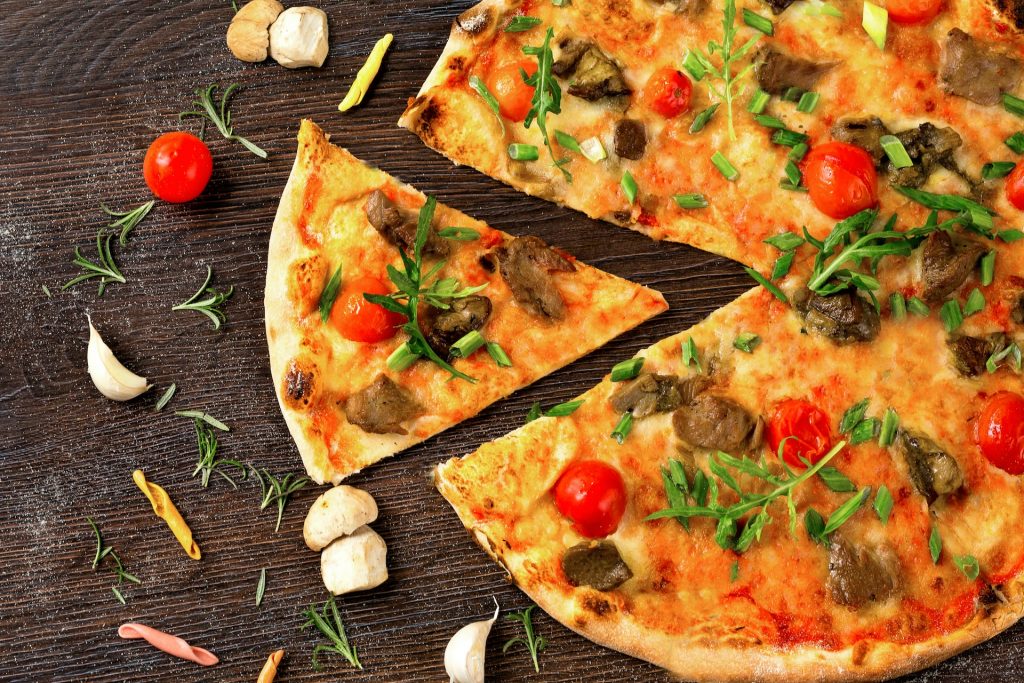
The pizza crust is the foundation for any great pizza, and the type of crust you choose will have an effect on the texture and flavor of your pie. Here’s a breakdown of some popular types of pizza crusts, as well as their benefits:
🍕Thin-Crust Pizza
Thin-crust pizza is just that – thin! The dough is rolled out thinly to produce a light and crispy base for your toppings. Thin-crust pizzas tend to have fewer calories than other types of pizzas, making it an ideal choice for someone watching their diet. It also cooks faster since it’s so thin, making it great when you need something on the table quickly.
🍕Deep-Dish Pizza
Deep-dish might be just what you’re after if you’re looking for something more substantial than a thin-crust pizza. This type of pizza is made with a thicker dough that’s pressed into a deep pan before baking. This creates a thicker crust that holds all the toppings in place while ensuring a nice crunchy texture on top and bottom. Deep-dish pizzas usually contain more cheese and sauce than regular pizzas because of their depth, making them great for those who love ooey gooey cheesy goodness in their meals.
🍕Stuffed Crust Pizza
Stuffed crust pizzas are exactly what they sound like – they are pizzas with an extra layer of dough stuffed around the edge with cheese or other fillings such as pepperoni or sausage. This type of pizza provides an extra layer of flavor and texture to each slice, making it perfect for those who want something different from the usual toppings on their pies. It’s also great for feeding a large crowd since you get more topping per slice compared to other types of pizza crusts!
🍕Gluten-Free Crust
For those who are gluten intolerant or following a gluten-free diet, there are plenty of options available when it comes to crafting a delicious pizza pie. There are several brands that have created gluten-free pizzas that taste just as good as traditional pizzas—and sometimes even better! You can find these pizzas pre-made in the grocery store or make one at home using store-bought or homemade gluten-free dough.
Whether you’re looking for something light and crispy or thick and chewy, understanding different types of pizza crusts can help you create the perfect pie for any occasion.
How to Layer a Pizza With Toppings
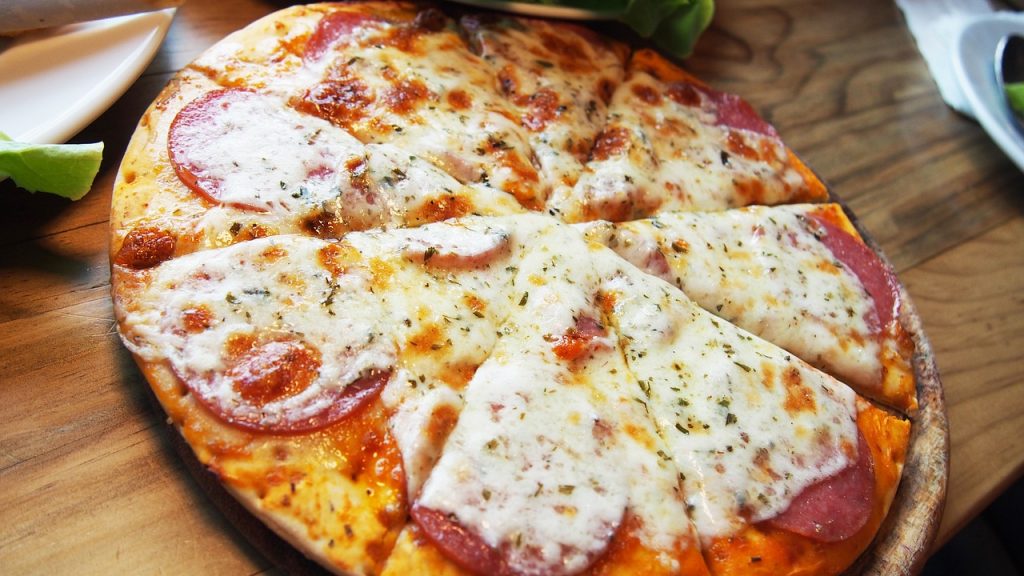
Making pizza is an art form. It takes skill and practice to achieve the perfect balance of dough, sauce, cheese, and toppings. But one of the most important aspects of making a delicious pizza is layering your toppings properly. When done correctly, layering pizza toppings can help elevate your pizza from good to great—so let’s take a closer look at how it’s done.
✔️The Right Order Matters
When it comes to layering your toppings on top of each other on your pizza, order matters. Here’s the general rule of thumb when stacking those delicious additions on top of each other: start with meats (if you’re using any), followed by vegetables, and then cheeses. This helps ensure that all the flavors are evenly distributed throughout the entire pie and that none of the ingredients overpower each other in terms of flavor or texture.
For example, if you were making a meat lovers’ pizza with pepperoni, sausage, mushrooms, and mozzarella cheese as toppings, you would want to layer them like this: pepperoni first, followed by sausage; then mushrooms; then mozzarella cheese last. This will help prevent the heavier meats from sinking into the dough while allowing for even more cooking across all layers during baking time.
✔️Keep it Thin
Another key aspect to keep in mind when layering your toppings is thickness—it’s important not to go overboard! Too much topping can cause uneven cooking times and lead to an overly soggy crust—not ideal! Keep things thin by spreading your ingredients as evenly as possible so that no area has too much topping or too little topping. This will also help ensure that all ingredients cook roughly the same rate, which is key for achieving maximum flavor in every bite!
How to Create a Balanced and Delicious Pie
Here’s what it takes to make the perfect pizza:
➥Choosing the Right Dough
The dough is arguably the most important part of making any pizza. A good dough needs to be light and fluffy on the inside, with just enough crunchy crust on the outside for texture. The trick is finding that perfect balance between lightness and crispiness. You can either make your own dough from scratch or purchase pre-made dough from your local grocery store. Whatever you choose, keep in mind that different types of flour will affect the final product, so experiment until you find the best blend.
➥Picking Your Toppings
When deciding what toppings to use on your pizza, it’s important to remember that balance is key. Start by picking one type of sauce as a base, then add complementary vegetables and meats that complement each other in flavor and texture. For example, adding mushrooms and olives will give your pie an earthy flavor, while adding sausage or pepperoni will give it more meaty kick. You want to avoid overpowering flavors or too many competing textures; this will create an unappetizing mess rather than a delicious meal!
➥Baking Your Pizza
Once you’ve chosen your ingredients and assembled them onto the dough, it’s time to bake! Preheat your oven to 400 degrees Fahrenheit (204 degrees Celsius). Place your pizza on a baking sheet lined with parchment paper if possible to prevent sticking. You can bake for approximately 15 minutes or until golden brown on top (the exact time may vary depending on size). Once finished, let cool before cutting into slices, and enjoy!
The Perfect Pizza Topping for Every Palate
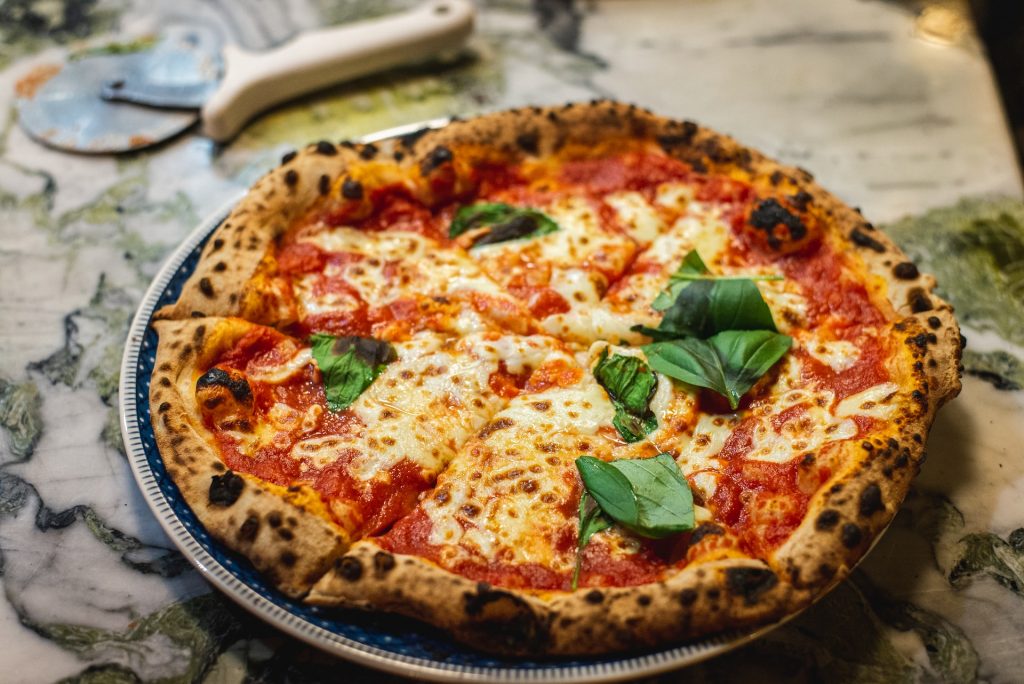
Here’s a breakdown of some of the most popular pizza toppings and which pizzas they pair best with.
🔴Cheese Toppings
Cheese is one of the most classic toppings used on pizzas. From mozzarella to feta, cheese can give your pizza a creamy texture and savory flavor that will make your mouth water. Cheese can be used as a base on thin-crust pizzas before adding other tasty toppings like pepperoni or mushrooms. For thicker crusts like deep dishes, cheese can be added in layers throughout the pie for an extra cheesy taste.
🔴Vegetable Toppings
Vegetables are another classic choice for topping pizzas. Vegetables from bell peppers and olives to onions and spinach add a healthy crunch to any pizza. These top also work well with all types of crusts—from thin crust to deep-dish—and are great for adding color and nutrition to any pie. For veggie lovers who want something different, try topping your pizza with artichoke hearts or roasted eggplant slices!
🔴Meat Toppings
Meats are always a favorite when it comes to topping pizzas. Pepperoni is by far the most popular meat topping, but there are plenty of other options out there too—like sausage, bacon, chicken, and ham. Meat toppings work especially well on thicker crusts like the deep dish because they provide more structure and support than thin-crust pies can handle without getting soggy or falling apart. Try adding a few slices of jalapeno or spicy sausage to your pizza for an extra kick of flavor.
Regardless of the toppings you choose, remember the key is to start from the bottom up. Layer your ingredients in order from sauce to cheese and finally to toppings like meats and veggies.
Tips to Make the Perfect Pizza Every Time
From the crust to the toppings, here are some great tips and techniques for creating the perfect pizza every time.
☑️Choose Your Crust Wisely
The foundation of a great pizza is its crust. You have a few options for choosing the right type of crust. A traditional thin crust will give you a crispier texture, while thicker crusts like deep dishes or focaccia offer an extra crunchy exterior with a soft center. For something different, try making your own dough from scratch using whole wheat or gluten-free ingredients. It’s also important to consider what type of pan you use when cooking your pizza – cast iron skillets work best for deep-dish pizzas, while sheet pans are great for thin-crust pizzas.
☑️Don’t Overdo it on the Toppings
When adding toppings to your pizza, less is more! Too many toppings can weigh down your pizza and make it difficult to bake evenly. Stick with two or three main ingredients like cheese, vegetables, and meats to avoid overloading your pie. Be sure to pre-cook any meats (like bacon) before adding them on top of your pizza so that they don’t overcook in the oven later on. Also, be careful not to add too much sauce; if you’re using store-bought sauce, start by adding just enough to lightly cover the surface of your dough before adding additional layers of cheese and other toppings.
☑️Bake at High Heat
When baking your pizza at home, it’s important to use high heat in order to get that crispy texture on the outside while keeping a soft center on the inside. Preheat your oven as hot as it can go (around 500°F). For thin-crust pizzas, bake them directly on an oven rack or preheated pizza stone for about 8 minutes; for deep-dish pizzas, bake them in a preheated skillet or baking sheet for 15 minutes or until golden brown and bubbly around the edges. Letting your pizzas cool slightly before slicing helps keep their shape intact when served!
By following these simple tips, you’ll be sure to create the perfect pizza every time.
Popular Combinations and Recipes
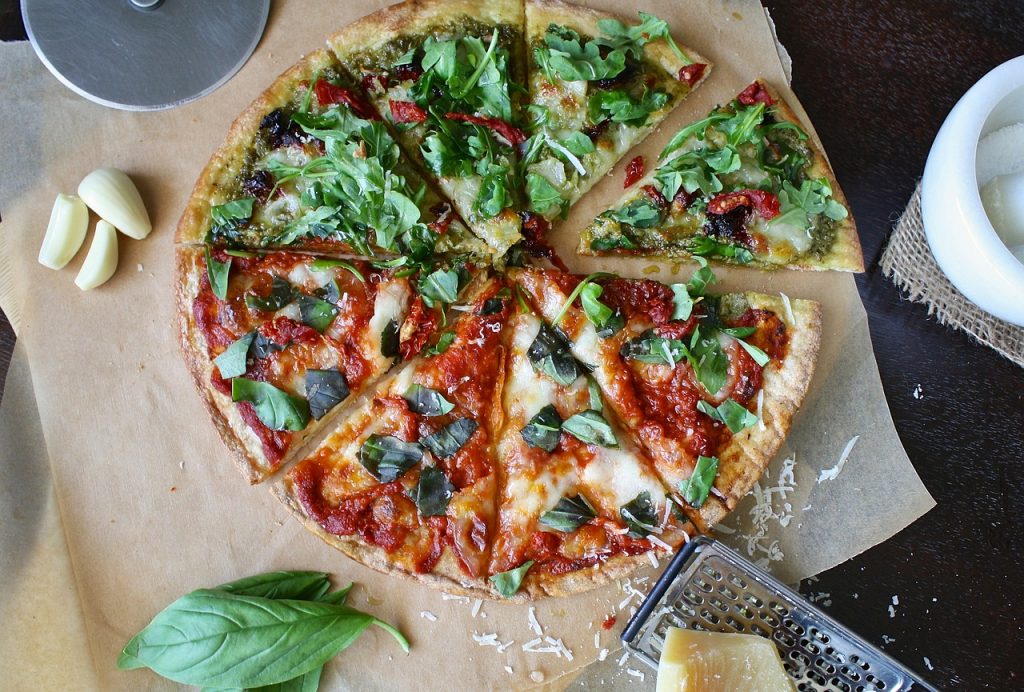
So if you want to take your pizza game up a notch, you’ll need to get creative with your toppings and sauces. Here are some popular combinations and recipes that will help you create the perfect pizza every time.
🤤Classic Combos
One of the most classic pizza combinations is pepperoni and cheese. This combination is a fan favorite because it has all the flavor of traditional Italian-style pizza without being too overwhelming. Sausage and mushroom are an excellent choice for those looking for something a bit more adventurous. The earthy flavor of mushrooms pairs perfectly with spicy Italian sausage and lots of gooey mozzarella cheese. Another classic combo that never goes out of style is pineapple and ham. Sweet pineapple plus salty ham makes for one irresistible pizza!
🤤Cheese Lover’s Delight
Nothing beats the classic combination of cheese, tomato sauce, and crust. This combination is a favorite for cheese lovers around the world. Try adding your favorite toppings like fresh tomatoes, mushrooms, or olives to make it even more delicious. You can also add additional types of cheese, such as mozzarella or feta, for an extra cheesy kick!
🤤Meat Lovers’ Supreme Pizza
For meat lovers, there is nothing better than a Meat Lovers’ Supreme Pizza! This ultimate meat-lover’s dream combines pepperoni, sausage, bacon, and ham to create a flavor explosion in your mouth. To make it even better, add a few vegetables like bell peppers and onions for added flavor and nutrition.
🤤Veggie Lover’s Dream Pizza
If you are looking for something healthier but still packed with flavor, then the Veggie Lover’s Dream Pizza is a perfect choice. This hearty vegetarian pizza includes roasted tomatoes, bell peppers, onions and garlic, and generous amounts of cheese and herbs like basil and oregano. Add hot chili flakes or jalapenos to spice things up for an extra kick!
🤤Classic Pepperoni Pizza
This is a classic combination for a good reason. The classic pepperoni pizza is an easy crowd-pleaser and a great starting point for experimenting with different pizzas. Start with your favorite dough, top it off with store-bought tomato sauce, mozzarella cheese, and pepperoni slices, then bake it in your oven until golden brown and bubbly.
🤤BBQ Chicken Pizza
This BBQ chicken pizza is the perfect option if you’re looking for something a bit more adventurous than the classic pepperoni pizza. Start by preparing your chicken before cooking, then brush store-bought BBQ sauce. Place it onto your dough before topping it off with cooked shredded chicken, red onion slices, mozzarella cheese, cilantro leaves, and freshly cracked black pepper. Then bake until golden brown and serve hot!
🤤White Garlic Pizza
This white garlic pizza is another great alternative to traditional pizzas. Start by brushing garlic-infused olive oil onto your dough before topping off with freshly grated Parmesan cheese. Also, with mozzarella cheese, roasted garlic cloves (you can find pre-roasted garlic cloves in most grocery stores), thinly sliced scallions or chives, fresh basil leaves, and freshly cracked black pepper. Bake until golden brown, and enjoy!
🤤Margherita Pie
If you’re looking for something lighter than traditional pizzas, try making a Margherita Pie. This type of pizza features a fresh tomato sauce base with mozzarella cheese and fresh basil leaves. The basil leaves add a unique flavor that perfectly complements the tomatoes’ sweetness and the cheese’s richness. You can also add some garlic for extra flavor if desired.
🤤Veggie Supreme Pizza
For vegetarians or those looking to get more veggies into their diet, this supreme veggie pizza is sure to satisfy your taste buds! Start off with a tomato sauce base, then top it off with mushrooms, bell peppers, onions, olives, jalapenos, artichoke hearts – whatever veggies your heart desires! Finish off your masterpiece by sprinkling grated mozzarella cheese over the top. Bake until golden brown, and enjoy!
No matter what pizza you’re craving, the key to creating perfect pizzas every time is understanding how to layer your toppings from the bottom up. With this knowledge, you can be sure that your pizza will turn out delicious every time! Enjoy experimenting with different combinations and flavors to find your perfect pizza!
Final Words
Now that you know how to layer a pizza with toppings, you can have fun creating a variety of tasty pizzas! Whether you’re in the mood for an Italian classic or something more adventurous, understanding the basics of how to layer toppings is key. With a little practice and experimentation, you can make delicious pizzas that your friends and family will love! Happy cooking!
